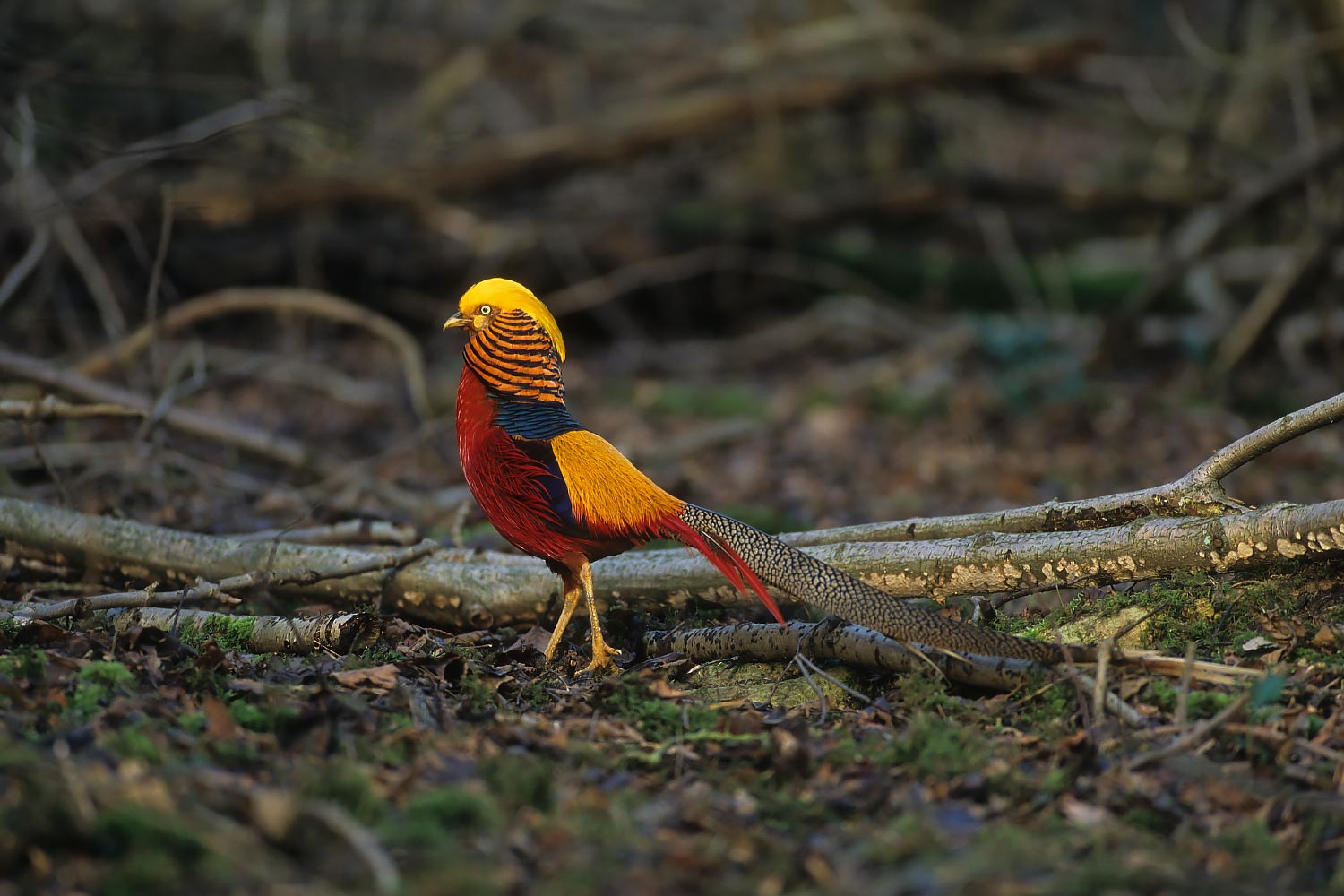A new study has concluded that Britain's population of Golden Pheasant is now functionally extinct.
Having first been introduced to Britain in the late 19th century, Golden Pheasant currently sits on category C1E of the British list as a naturalised species – the only country in the Western Palearctic where Golden Pheasant is countable on lists. However, numbers have dwindled in recent decades, and new research has suggested that the remaining birds do not represent a viable population.
The authors of the paper have also suggested that the species should be moved to Category C6, a sub-category dedicated to 'formerly naturalised species' which are either extinct or no longer self-sustaining.

This male Golden Pheasant was photographed among the dark understory of Wayland Wood, formerly perhaps the premier hot-spot for the species in Britain, back in 1997 (Robin Chittenden / www.robinchittenden.co.uk).
At their peak, between the 1940s and 1970s, as many as 1,000 Golden Pheasants were estimated to be at large in Britain. In the traditional stronghold of Breckland, more than 100 could be seen at single sites.
However, the species has declined since then and, as the paper shows, today most free-living British individuals were hatched in cages (such as on Tresco, Scilly). There may be one site in The Brecks where descendants of the naturalised population remain, but this is thought to be unlikely.
The team of researchers carried out a survey of this remnant Breckland population in 2022-23, chiefly looking for immatures which may suggest breeding. While a second-year male was discovered, it was one of only four individuals found – three males and a female. It's probable that some or all of these were released and didn't descend from the 'original' Breckland population.
Camera-trap footage reaffirmed that the population was approximately four birds – far fewer than the official British population estimate of 20-30. As a result, the study concluded that no self-sustaining British populations persist and that Golden Pheasant should be moved to Category C6.
The paper cited other extirpated populations in Anglesey, Dumfries and Galloway, the South Downs in Hampshire/West Sussex and North Norfolk. It also discussed a population at Poole Harbour, Dorset – the only place outside Breckland where Golden Pheasants can be seen in Britain. However, the team concluded that these birds cannot be considered naturalised due to ongoing releases and supplementary feeding.
It seems likely this research will form the basis of a review of Golden Pheasant status on the BOU's British list, with the species set to follow in the footsteps of Lady Amherst's Pheasant, which was placed in Category C6 in 2005.
Reference
Smith, W J, Jezierski, M T, & Balmer, D E. 2023. Discerning the status of a rapidly declining naturalised bird: the Golden Pheasant in Britain. Biol Invasions. DOI: doi.org/10.1007/s10530-023-03125-0


